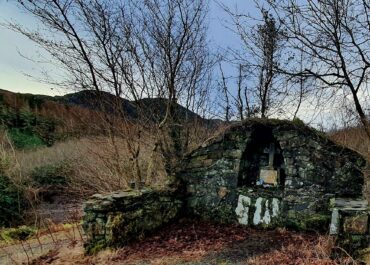Ritual site - holy well, Ballygorman, Co. Donegal
Along the rocky shore near Malin Head in County Donegal, there's a curious circular pool carved into the coastal rocks.
Ritual site - holy well, Ballygorman, Co. Donegal
Known as Tobar Muireadagh or the Malin Well, this natural basin measures 1.75 metres across and fills with seawater at high tide. The well takes its name from a hermit called Muireadagh (also spelled Muirdhealach or Moriallagh in various historical sources) who reportedly lived nearby in ancient times. According to the Martyrology of Donegal, this Muirdhealach was the son of Cuanna, of the race of Irial, and his church and feast day on 3rd November were once observed in Inishowen, though this particular date seems to have fallen out of local memory long ago.
The well has a fascinating history as a ritual site that bridges pre-Christian and Christian traditions. Local folklore suggests that pilgrimages, known as ‘turus’, were made here on May Eve and Midsummer Eve; dates that hint at much older, pagan observances. By the 19th century, patterns (religious festivals) were being held at the well on St. John’s Eve and the Feast of the Assumption on 15th August, the latter evolving into what became known as the Malin Well Fair. Writing in 1936, the folklorist Ó Muirgheasa noted that whilst tents and drinking still featured at these gatherings, the religious element had largely disappeared, much to the dismay of local clergy who had been trying to discourage what had become rather rowdy affairs.
The well was long believed to possess healing properties, with invalids bathing in its waters hoping for recovery. Local tradition holds that it was blessed by a saint in ancient times, and numerous stories of miraculous cures were passed down through generations. Nearby stand the remains of what’s known as Gorman Church or the Well Church, which tradition attributes to a Saint Maher, though this appears to be a corruption of the hermit Muireadagh’s name. Today, the well remains a tangible link to centuries of folk belief and religious practice on this windswept corner of Ireland’s northern coast.


